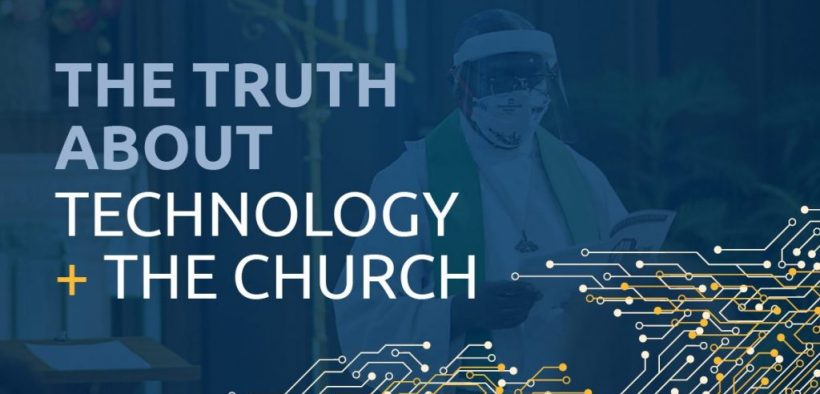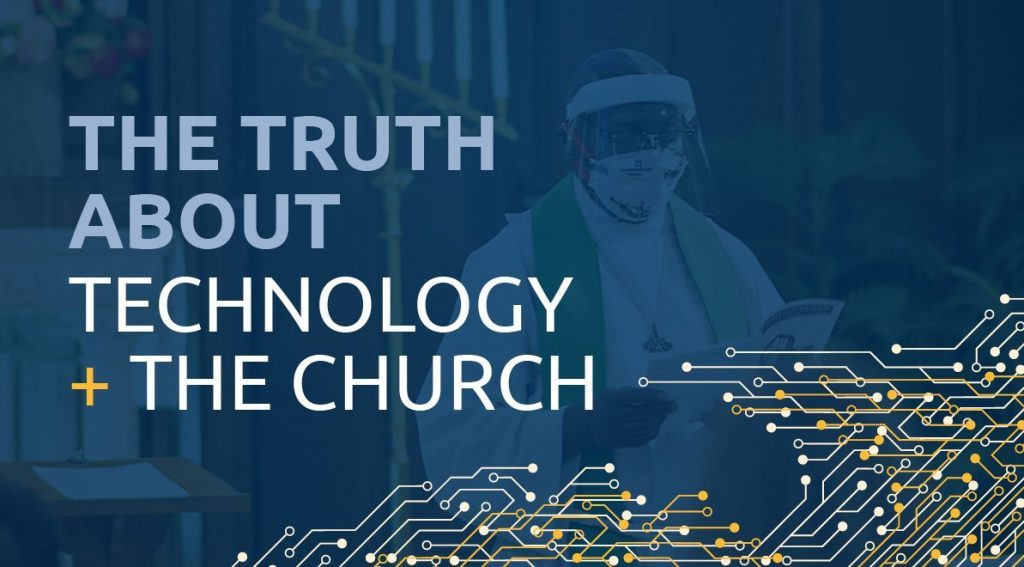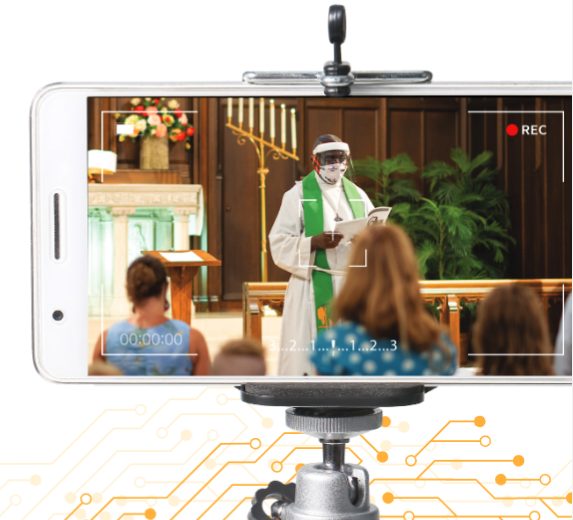

Here’s an interesting fact: a little gizmo known as the alphabet allowed us to write this first sentence.
It allowed us to write this article as well as the entire magazine. So did a laptop, smartphone, the Internet and a number of books. Coffee, the product of a bean cultivated, roasted and brewed, helped us meet our deadlines. A printer pressed thousands of paper copies into print. The postal system delivered the magazine to your door. Your glasses or contact lenses will help you read it.
The point? Technology is everywhere. Adhesives. Bookkeeping. Card catalogs. Dams. Hang gliders. Javelins. Polyester. Radios. Stained glass. Toasters. Vacuums. All products of technology. But what exactly is technology?
Technology explained (sort of)
“Technology is very difficult to reduce to a single definition,” says Rev. Trevor A. Sutton, associate pastor at St. Luke Lutheran Church in Lansing, Mich. “Some scholars define technology in fairly narrow ways, limiting it to physical objects such as machines, computers and gadgets. Others have argued that technology includes not only physical objects but also that which is non-physical such as knowledge or techniques. Technology can be physical or non-physical, new creations or ancient artifacts.”
Sutton is a leading voice on the subject of technology and the church.
“I became interested in the intersection of theology and technology while doing graduate studies at Michigan State University in the field of digital rhetoric, and it was there that I came to realize how ubiquitous technology is in our daily life.”
That was about six years ago, but he continues to be interested in the topic as a Ph.D. student at Concordia Seminary, St. Louis, researching the relationship between faith and technology. He’s working on a book (his fifth) for Concordia Publishing House. This forthcoming book addresses the topic of faith and technology.
Yes, technology has a place in the church
“We certainly can and should use the fruits of human creativity and ingenuity in service to the Gospel,” Sutton said. “It’s important to realize that the church has always used technology in some way. For example, Paul used the literary technology of his day—books and parchments—to proclaim the Gospel to many people: ‘When you come, bring the cloak that I left with Carpus at Troas, also the books, and above all the parchments’ (2 Tim. 4:13). So, technology absolutely has a place within the church.”

History supports this claim.
The Greek language and the Roman road system allowed the Gospel to spread quickly throughout the known world. Luther nailed 95 Theses on the Wittenberg church door in hopes of an academic debate with his fellow professors. Nobody took him up on it until bootleg copies of the Theses, made with the printing press, were circulated. In the early 1920s, a group of Lutheran Church—Missouri Synod (LCMS) Lutherans decided to share the Gospel on the largest scale possible at the time: radio. Nearly a century later, KFUO Radio is still going strong.
To this very day, we see technology everywhere inside our churches: ribbed vaulting, electrical lights, organs, hymnals, pews, baptismal fonts, crockpots and coffee machines. And precisely because of its ever-present existence, Christians should tread lightly when it comes to using technology.
But read this first
“Before we can use technology like Christians,” Sutton said, “we must talk about technology like Christians. Rather than relying on the world’s words and knowledge about technology, the followers of Jesus use the language of Scripture—Creator, creation, creature and creativity—to speak about technology. By using the language and narrative of Scripture, we can foster a peculiarly Christian use of [it].”
The concern is an uncritical acceptance of new technologies.
“As technology increases in our world, it is important for the followers of Jesus to keep John the Baptist’s words preeminent in our mind: ‘He must increase, but I must decrease’ (John 3:30). As we use technology—either individually or as congregations—it should be directed toward the increase of Christ.”
Some embrace technology happily. Others, not so much. Legend has it that Johannes Trithemius, a 15th-century abbot, worried that the printing press would make monks lazy. He is reported as saying, “For, among all the manual exercises, none is so seemly to monks as devotion to the writing of sacred texts.” Sometimes, however, the use of technology is forced.
Take March 2020 for example.
Church, meet 21st-century technology
Pastor James Moshier of Trinity Lutheran Church, Arapahoe, Neb., had this to say about the pandemic: “The silver lining of this dark cloud has been to force the church into the 21st-century of technology.”
Trinity Arapahoe was one of 165 churches Lutheran Church Extension Fund (LCEF) sent online streaming kits—tripods, cameras, earbuds—in early April ahead of Easter services.
“It is helping us get more online and [we are learning how to do] it pretty well. Our director of Christian education (DCE), Cassie Boeke, is posting daily videos and video conferencing with our youth all the time. It has been a great help.”

In Superior, Neb., Rev. Robert Hopkins of Centennial Lutheran Church, has made full use of the online streaming kit and other gadgets.
“I am recording radio services on Fridays,” Hopkins said, “recording Facebook services early Sunday morning and then we do a live service in the parking lot using an FM transmitter that I bought so that everyone can stay in their cars. We have had a good turnout for that—actually more people than we normally have in church … but that is because we have some other churches’ people that are not having services of their own.”
Seeing the fruit of this new labor
Tiffany Danley, director of discipleship at Christ Lutheran Church in Overland Park, Kan., said her church had to overcome the technology learning curve quickly.
“Our congregation at Christ Lutheran Church is a vibrant, mission-minded congregation, but we were lacking an online presence for those looking for that type of a connection. By establishing online worship services, a stronger social media presence and asking for direct feedback on other needs of our church family, Christ Lutheran has seen a significant addition to our church family and thus the church at large.”
As you might expect, this transition didn’t come without challenges.
“Making these changes has come at a high cost to staff time and resources that were not necessarily prepared for such a sharp turn,” Danley said.
“However, we are seeing the fruits of those labors as we seek to evaluate and adjust continually.”
The bridge between church and home
Fortunately, King of Kings Lutheran Church, Chesterfield, Mo., started livestreaming in November 2019 to reach members who couldn’t make it to the church due to bad weather or illness.
“In the past, technology played a smaller role in our church,” said Paul Nelson, DCE at King of Kings. They recorded and uploaded every service, but to “archive rather than allow people to participate remotely.”
Now, he said, it is essential.
Nelson suggested technology has acted as a bridge during the COVID-19 pandemic that “connects those here at church with those not. Earlier in COVID-19, that meant that it was a bridge between staff and congregation. It was vital for worship, communication and Bible study.”
There have been other benefits.
“It’s forced us to look at more creative ways to reach our congregation than ever before. Technology can’t replace in-person worship and being in God’s house, but it can help bridge the gap between church and home.”
Read related post- – For Educators: Crash Course in Digital Media








